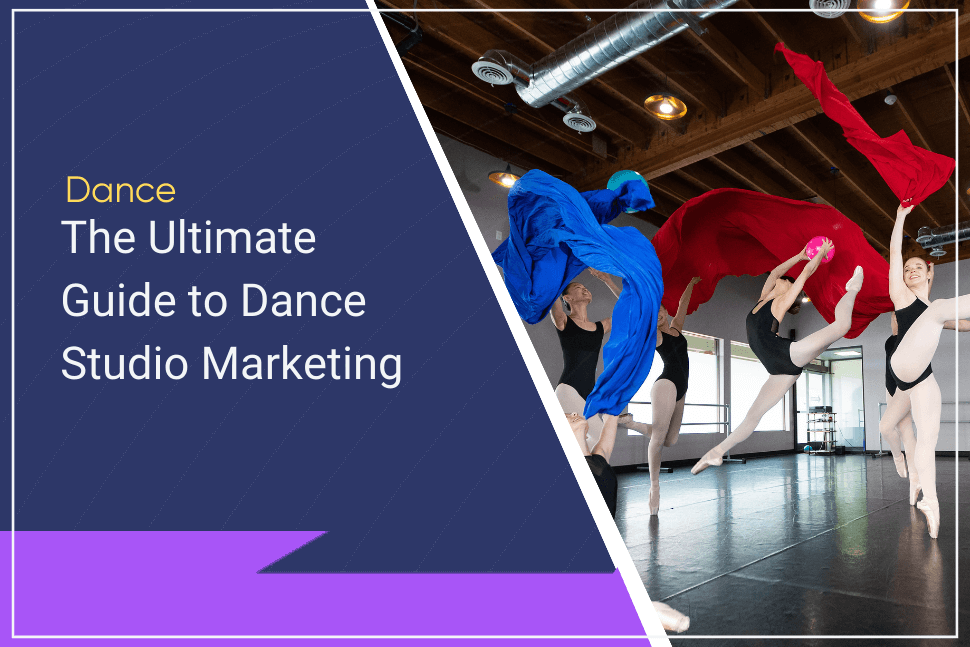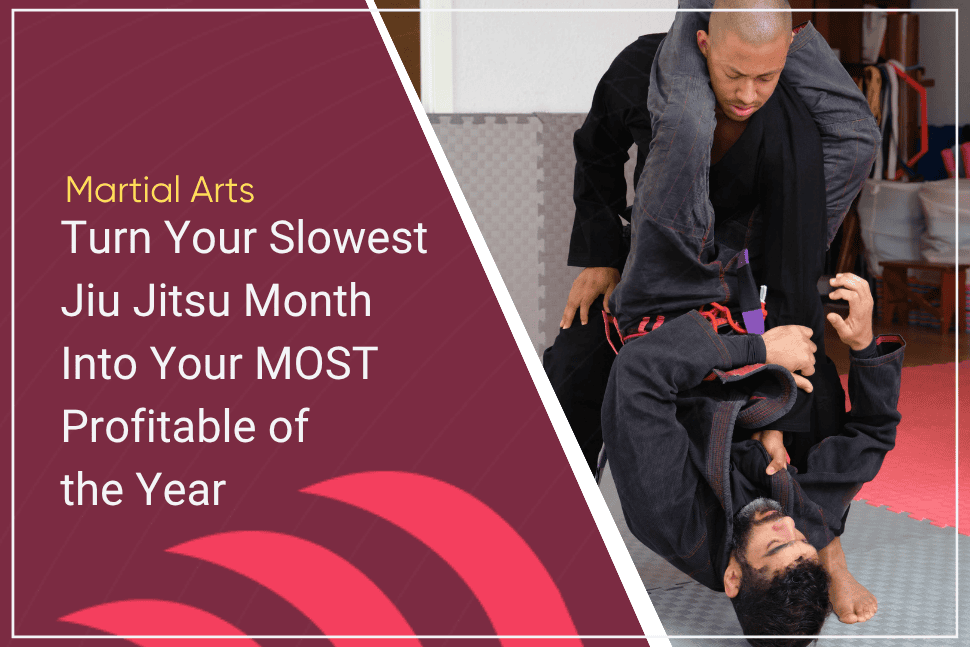As a dance studio owner, you’ve got more on your plate than you thought. As well as taking classes, you’ve got to market your business now, and that’s a drag on your own training, teaching, and business development.
Marketing is a scary prospect for many dance studio owners. There are so many ways to go, strategies to follow, and conflicting views of how best to spend your marketing dollars that all you want to do is turn and run in the opposite direction.
The goal of this article is to demystify dance studio marketing. Together, we’ll clarify your marketing goals, identify your unique selling proposition, and present a complete marketing plan to cover every medium.
Once you complete reading this 4-minute guide, you’ll have a complete blueprint to market your dance studio for at least the next six months.
Understand Your Audience
Dance studios appeal to a wide audience, from preschoolers to retirees. While you want to attract as many people as possible, a scattergun approach will get you nowhere. Instead, you need to identify the market segments you will cater to.
Here are some potential market segments:
- Children aged 3-12
- Teens and adolescents
- Adults (fitness)
- Adults (social dance)
- Aspiring dancers (16-25 years)
- Senior Citizens
You may cater to two or three of these market segments but should have a primary focus. Once you’ve identified it, I recommend creating a customer persona. This is a detailed fictional representation of your ideal customer based on market research. Include the character’s demographic information, interests, motivations, and challenges.
Taking the time to create a customer persona will humanize your prospective customers, allowing you to more easily craft marketing messages that meet them where they are at.
To create your customer persona, you should gather data through surveys and interviews with your existing customers. Look for common themes regarding age, interests, location, and reason for selecting your studio.
Create personas for each segment of your audience. For instance, one persona might be ‘Busy Mom Michelle,’ with another being ‘Dance Enthusiast Emily.’
Having identified your customers’ challenges and preferences, you can now tailor your marketing messages to suit them.
Develop Your USP
Once you’ve identified your audience and clearly understand their wants and challenges, you can develop your unique selling proposition or USP. This is the thing that sets you apart from the competition.
You should now know just what your audience values most highly in a dance studio. This could be professional instructors, a sense of community, diverse dance styles, or a range of other factors. Use these as the basis for your key marketing message.
Here are a couple of examples of USP marketing messages aligned to customer preferences:
- Community-Focused: “More Than Dance – Building Lifelong Friendships Through Movement.”
- Professional Excellence: “Elevate Your Dance Journey with Industry-Experienced Instructors.”
Identify Your Goal
Without a clearly defined dance studio marketing goal, your marketing efforts will be haphazard. You need to know exactly where you are going to plot your path and track your progress.
A problem I see with some gym and dance studio operators is that they have too many goals. Usually, they fail to achieve any of them. That’s why I want you to narrow your marketing focus down to a single goal. All your marketing efforts will be aligned to fulfill this goal.
An example of a marketing goal might be to sign up 80 new members in the next six months. That breaks down to just over 13 new monthly members, or just over three new members each week.
Now, you can reverse engineer your marketing efforts to achieve your goal. To do this, you should analyze your marketing data to identify your historical conversion rate. This will tell you how many inquiries turn into actual sign-ups. Look, too, at the extent of marketing that was required to produce those inquiries. That will give you a baseline for your marketing efforts.
Social Media Marketing
You will never be competitive in today’s marketing environment without embracing social media marketing. This powerful platform allows you to reach a massive audience while also focusing on your target market segments.
Consistent marketing across all your social media platforms will help create your studio’s brand. The most effective social media platforms for dance studios are Facebook, Instagram, LinkedIn and TikTok. They provide excellent opportunities to showcase dance routines, provide behind-the-scenes glimpses, and highlight student successes.
High-quality video and images should be used to capture the energy and atmosphere of the studio.
Make use of social media to engage with your audience. Be on top of comments and direct messages, responding to them promptly. Run polls, ask questions, and encourage user-generated content to boost engagement.
You must maintain a cohesive brand identity across all your platforms. Your colors, logos, and messaging must be consistent to build your brand.
I also recommend creating and using hashtags. These increase the discoverability of your content. Encourage your community to use branded hashtags when posting about your studio.
Regularly update your social media accounts with upcoming events, workshops, and class schedules.
Let’s now consider how to best utilize each of the social media platforms to market your dance studio.
Facebook may be the oldest social media platform, but that doesn’t mean its value has diminished. It remains a very effective medium to communicate with your target audience.
Begin by identifying your Facebook advertising goal. This should align with the one overriding goal you identified at the outset. Then, create a Facebook business page if you don’t already have one.
Use Facebook’s targeting options to reach your target audience. This allows you to drill down on the demographics, locations, interests, and behaviors of those who see your advertising.
You’re now ready to create your Facebook ad copy. Use high-quality visuals to represent the energy and essence of your studio. Your ad copy should be compelling and concise, highlighting your studio’s benefits.
Carousel Ads allow you to add variety to your messaging. Each carousel card should have its own call-to-action.
Create exclusive promotions or discounts for new members, using Facebook ads to promote the offer.
I also recommend requesting and showcasing user-generated content from your students. Feature testimonials, photos, or videos to highlight the positive experiences at your dance studio.
Facebook’s lead generation ads allow you to collect contact information directly from potential students. Offer something valuable in exchange, such as a free class or exclusive content.
Schedule your Facebook ads for your target audience during peak engagement times.
Instagram is a visually dynamic platform, making it an ideal place to showcase what your dance studio offers. Get started by setting up an Instagram business profile. Make sure it is complete, with your profile pic, bio, contact info, and your website link.
Your bio should be carefully crafted, highlighting what makes your dance studio unique. Include relevant keywords and a call to action to learn more.
Your Instagram content should showcase your studio’s energy, creativity, and diversity. Make liberal use of images and videos of dance routines, student achievements, and behind-the-scenes action.
Utilize Instagram Stories to share daily updates, announcements, or glimpses into classes. Make use, too, of interactive features like polls, quizzes, and questions to engage your audience.
I recommend using Instagram’s IGTV feature to share longer videos, such as dance tutorials, interviews with instructors, or recital highlights. Creating a series ensures that your audience keeps coming back for more.
Take advantage of IGTV to share educational content about different dance styles, techniques, or the history of dance. This will help to position your studio as an authoritative and knowledgeable resource in the dance community.
Instagram Reels allow you to post short, entertaining dance clips. You should also consider hosting live sessions for dance tutorials, Q&A sessions, or behind-the-scenes looks.
Instagram’s advertising platform allows you to reach a wider audience than your followers. Create visually appealing ads with clear calls to action to drive traffic to your website or encourage class sign-ups.
Everything you need to run a profitable dance studio (and get back to dancing!)Dance Software that Grows Your Studio
TikTok
TikTok has quickly established itself as a powerful marketing platform for all types of businesses, including dance studios. This medium features short videos ranging from 15 to 30 seconds in length. The tone is informal and entertaining.
To start with TikTok, you should create an account for your dance studio. Optimize your profile with a catchy username, profile picture, and a brief, engaging bio.
A key area you can participate in is popular dance challenges relevant to your dance style or studio. Creating your unique spin on trending challenges can increase visibility.
You should also share short snippets of your dance routines or choreography. Use creative camera angles and transitions to make your content visually appealing. Feature your students performing and engaging in dance-related activities.
TikTok Duets are another area with marketing potential for studios. They allow users to dance alongside your instructors or students.
You should also share bite-sized educational content about different dance styles, techniques, or fun facts. This will help position your studio as an authority in the dance community.
Identify and collaborate with local dance influencers on TikTok to reach a broader audience. Influencers can create content featuring your studio, driving traffic to your TikTok account.
TikTok also provides a paid advertising option. These allow you to target a specific audience.
YouTube Marketing
YouTube provides an ideal opportunity to let the world know what your dance studio offers. Begin by creating a branded YouTube channel for the studio that includes a compelling profile pic, your banner, and a studio description.
Make the best use of video descriptions and titles to showcase your videos. Make the descriptions as detailed as possible, including relevant keywords and links to your website or social media.
Utilize high-quality video production of dance performances, tutorials, instructor interviews, student spotlights, educational content, and behind-the-scenes footage.
Consider doing collaborative videos with popular dance influencers or local dancers. Doing so will open up your content to a new audience.
It’s worth making the effort to organize your videos into playlists based on themes and dance styles. These make it easy for viewers to locate related content on your channel.
Be sure to respond promptly to comments on your videos. You should also encourage your viewers to like, share, and subscribe to your channel.
The key to success on YouTube, as well as the other platforms, is consistency. Establish a consistent uploading schedule to keep your audience engaged. This builds trust and encourages viewers to return for new content.
Your Dance Studio Website
For dance studios to establish an online presence, attract potential students, and provide essential information, website marketing is crucial. Here’s a guide on how dance studios can effectively market their website:
Your online marketing should be built around your business website. Your Facebook, Instagram, YouTube, and TikTok posts should all direct viewers to the website to learn more and sign up for a lead generation offer.
Your website should feature a clean, user-friendly design and be mobile-friendly. Create a visually appealing homepage that clearly and simply presents your USP offer.
Make use of high-quality images and videos to engage your visitors. The call to action should be clear and prominent.
Provide detailed information about your dance classes, including styles, levels, schedules, and pricing. You want it to be as easy as possible for visitors to understand what you have to offer.
Make it easy for visitors to understand the variety of classes offered.
It’s worth paying a professional photographer to produce the best quality images to feature on the site. These photos should highlight performances, classes, and the overall atmosphere.:
Feature testimonials from satisfied students and parents. Positive reviews add great credibility and influence potential students’ decision-making.
Incorporate an easy-to-use online registration system on the site where visitors can sign up for a class or workshop.
Have an area of the website where you introduce your dance instructors with bios, photos, and an overview of their expertise.
Maintain an updated event calendar with information about recitals, performances, workshops, and other studio events.
Improve your website’s visibility with search engine optimization (SEO) strategies to improve your website’s visibility on search engines. This includes using relevant keywords, meta tags, and descriptions.
I highly recommend maintaining a blog or news section on the website to share studio updates, dance-related articles, and educational content. Regularly publishing fresh content improves your website’s SEO and keeps visitors engaged.
Gymdesk offers a beautiful, SEO-optimized website fully integrated with all its studio management features – for no additional cost.
Email Marketing Strategies
Email marketing is a direct communication method, delivering messages straight to consumers’ inboxes without the need for them to actively seek the content. When executed correctly, it becomes an effective means of reaching the desired audience. Each sent email generates valuable data, revealing insights such as open rates, content engagement duration, and link clicks.
To embark on successful email marketing, building an email list is paramount. The primary approach involves creating an opt-in, often in the form of a lead magnet or giveaway, where something free is offered in exchange for the recipient’s email. Dance studios commonly provide PDF guides, video training, or free audio files, ensuring the incentive resonates with the target audience.
After developing a lead magnet, distribution across social media platforms is crucial. Utilize channels like Facebook ads, groups, your website, and Instagram’s bio link. Establish a landing page, achievable through platforms like WordPress, LeadPages, or Unbounce.
In addition to lead magnets, tap into existing email contacts and ask them to subscribe, including current clients and seeking referrals. The consistent growth of the email list hinges on delivering valuable, unique content. Emails should aim for an ‘aha’ reaction, providing solutions, answering queries, or offering lightbulb moments that encourage sharing.
Before commencing an email campaign, consider crucial factors such as defining the audience, determining the primary message takeaway, specifying the goal (e.g., brand awareness, rapport building, sales), and maintaining consistent branding.
The subject line and preheader are pivotal, as they are the first elements readers encounter. Craft enticing subject lines and utilize the preheader to build on the subject, enhancing email open rates.
Blogs serve as a significant avenue for email subscribers. Deliver compelling content in blog posts and prompt readers to subscribe for the latest updates.
Effective email content incorporates clear calls to action, short sentences and paragraphs, white space, hyperlinks, web-safe fonts, and social sharing options. Content suggestions for dance studios include training tips, dance choreography, stretching tips, nutritional tips, motivational content, testimonials, and dance industry news.
Opt for reputable email marketing software such as MailChimp or Aweber to initiate an email campaign. Consider factors like features, cost, ease of use, CRM and marketing automation, email analytics, and support.
Drip email campaigns involve sending a series of emails to move recipients closer to a desired action. A proven format includes:
- Introducing Yourself
- Telling a Story
- Providing Value
- Presenting Facts
- Inducing Scarcity
Timing is crucial in email marketing. Aim for bi-weekly emails, keeping them brief with a cliffhanger to maintain reader interest. Striking the right balance ensures that your business remains in the reader’s mind without causing annoyance.
Offline Marketing
While maintaining an active social media presence is vital to the success of your marketing efforts, neglecting traditional marking methods is a mistake. Here are ten offline methods that have proven to be effective:
- Local partnerships and sponsorships: Form marketing partnerships with nearby gyms, Pilates and yoga studios and health food stores. Increase your local community visibility by sponsoring community events.
- Flier Distribution: Create visually appealing flyers highlighting the studio’s USP and distribute them within a 5-mile radius of your location.
- Community Bulletin Boards: Make use of bulletin boards in grocery stores, libraries, and community centers to display posters and information about your dance studio.
- Local Press & Media: Send out press releases to local media and invite reporters to cover workshops, recitals and special classes.
- Workshops & Demonstrations: Offer free dance workshops or demonstrations at local schools, community centers, or fairs to showcase your studio’s talent and attract potential students.
- Direct mail campaigns: Create a targeted direct mail campaign to capitalize on back to school season and holidays. Offer a special rate as an incentive.
- Vehicle Branding: Vehicle decals and wraps are an effective way to increase your business visibility in your local community.
- Local radio advertising: Advertising on the radio will get your message in the ears of thousands of people in your area. Consider sponsoring a local segment on dance or health and fitness.
- Open house and studio tours: Host open houses to allow the community to tour your dance studio, meet instructors, and learn about your programs. Offer special promotions or discounts for attendees who sign up during the event.
- Loyalty programs and referral rewards: Create a loyalty program from your existing students as well as an incentive program for those who refer new members.
Conclusion
You’ve now got access to the key marketing strategies that will allow you to share your studio with the world. The key to making them work for you is consistently implementing them in line with a marketing plan.
Spend 15 minutes on each social media platform daily, with regular updates to your website and blog. Stay as equally consistent with your offline marketing and you will be rewarded with more and more enthusiastic members.
 Gym Owner Statistics: The State of Gyms, Member Trends, and Usage Data
Gym Owner Statistics: The State of Gyms, Member Trends, and Usage Data




 EN (English)
EN (English)
 JA (日本語)
JA (日本語)